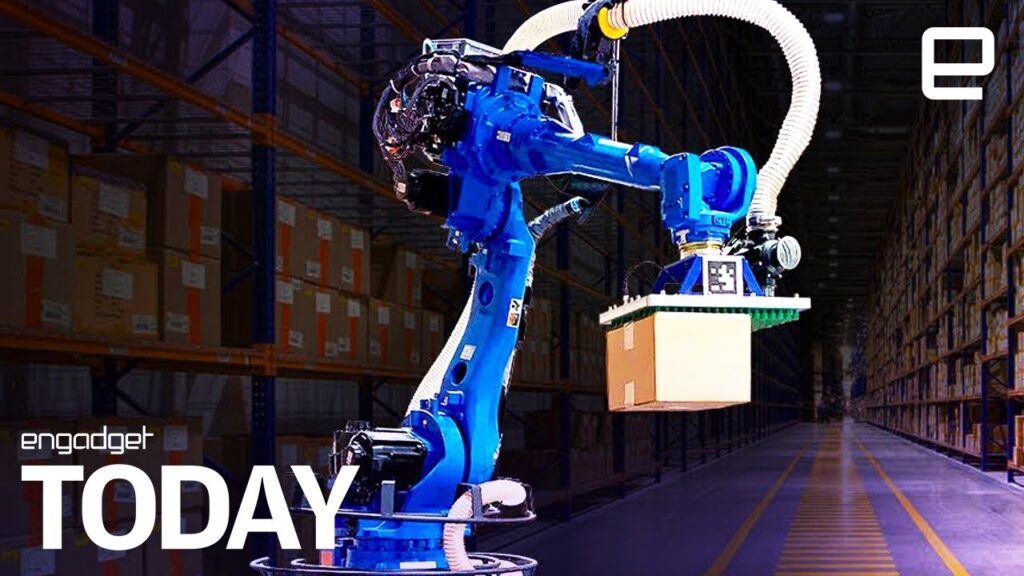Industrial Robots: Boston Dynamics Upgrades their Intelligence and Vision
Boston Dynamics is a renowned company that has stirred fascination and even some unease with their incredible robots. The captivating videos showcasing their robots' remarkable movements have dominated the internet for years. However, these robots are about to take a significant leap forward – Boston Dynamics is now enhancing the intelligence and vision capabilities of their industrial robots.
The integration of better brains and eyes into these robots will undoubtedly push the boundaries of what they can achieve. This development holds tremendous potential for various industries that rely on industrial robots to streamline their operations and increase efficiency.
Industrial robots have become ubiquitous in manufacturing, logistics, and other sectors, revolutionizing the way work is done. They perform repetitive tasks with precision, speed, and consistency, eliminating the risk of human error. The evolution of these robots promises to take automation to new heights, opening doors to possibilities we never thought were possible.
Enhancing the brains of industrial robots means providing them with advanced cognitive abilities. This will enable them to analyze complex situations, adapt to dynamic environments, and even make autonomous decisions. Imagine a robot that can independently troubleshoot a malfunctioning machine or optimize its movements for maximum productivity.
To achieve this, Boston Dynamics is incorporating cutting-edge artificial intelligence algorithms into their robots' systems. These algorithms allow the robots to process vast amounts of data, learn from their experiences, and continuously improve their performance. As a result, these robots will become more intelligent and adept at handling intricate tasks.
However, enhancing the eyes of industrial robots is equally crucial. Vision is vital for robots to interact with their surroundings effectively. By upgrading their vision capabilities, Boston Dynamics is enabling their robots to perceive objects, accurately identify them, and navigate through intricate environments with ease.
To accomplish this, the company is implementing advanced computer vision technologies. These technologies enable the robots to recognize objects and understand their spatial relationships, allowing them to manipulate and interact with their surroundings more effectively. This enhanced vision will empower industrial robots to work alongside humans seamlessly, minimizing the need for extensive programming or external guidance.
The integration of better brains and eyes into industrial robots marks a significant milestone in the path toward true human-robot collaboration. While fully autonomous robots are yet to make an appearance in industries, the advancements in Boston Dynamics' robots are bringing us closer to that future.
The implications of this progress are far-reaching. Industries that heavily rely on industrial robots will experience heightened productivity, increased safety, and reduced costs. With their improved cognitive abilities, these robots will facilitate complex operations and adapt to dynamic production requirements effortlessly.
Moreover, the enhanced vision capabilities will enable industrial robots to work in collaborative settings, side by side with human workers. This will not only improve the overall efficiency of operations but also create opportunities for workers to focus on tasks that require human judgment and creativity.
As with any technological advancement, there are concerns. Some worry about the potential job displacement resulting from the increased capabilities of industrial robots. However, history has shown that automation ultimately creates new jobs and leads to economic growth. The integration of better brains and eyes into industrial robots will likely follow this trend, proving to be a driver of innovation and prosperity.
It is crucial to remember that these advancements in industrial robots are not meant to replace human labor but rather enhance it. By taking over repetitive and physically demanding tasks, robots free up human workers to engage in more fulfilling and intellectually stimulating activities. This collaboration between humans and robots will reshape the nature of work, creating a more harmonious and efficient work environment.
As Boston Dynamics continues to push the boundaries of robotics, we can only imagine the incredible advancements that lie ahead. The integration of better brains and eyes into industrial robots is just the beginning. With each stride forward, the potential for human-robot collaboration becomes increasingly exciting. We are witnessing a new era in automation, one that holds remarkable promise for industries and the future of work.
Industrial Robot
"Enhancing Capabilities of Industrial Robots: Advanced Intelligence and Vision Boost for Machine Efficiency"


